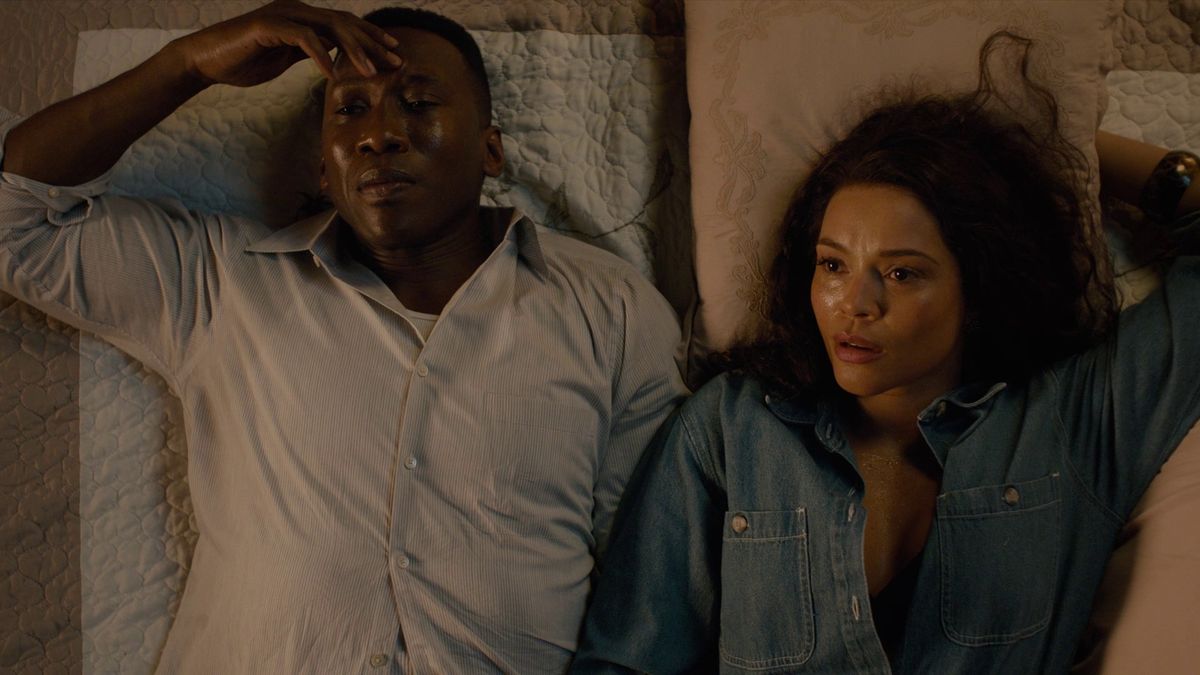True Detective - Ep 4

What does Lucy Purcell know? After four episodes, there is no one character who can help unlock this growing mystery more than she can. It's clear that she feels a level of guilt regarding her children's disappearance even beyond that of just a grieving parent. Her internalization and recitation of some of the lines on the ransom note is either a bizarre coping mechanism or a major hint that she knows more than she's let on. Yet the second she feels like Amelia (Carmen Ejogo) is there for something more than to just be a shoulder to cry on, she clams right up. Her connection to retailer Hoyt Foods, alongside this mysterious one-eyed man who keeps popping up in the mouths of West Finger residents, has to be explored further. And this certainly is not the last we have heard from Mr. Hoyt, who tragically lost a granddaughter and then created the 'Ozark Children's Outreach Center' for at-risk youth.
Funnily enough, Lucy is definitely right to distrust Amelia, who we still know preciously little about. In both '80 and '90, every time Hays tries to get anything personal out of her, she manages to divert and deflect any attention back onto him. Just as she uses a little sex appeal to get some additional information on Julie's fingerprints from the other detectives, so does she use sex to control Hays whenever the alternative is to actually open up. She's already admitted to often going out and creating whole new identities for herself, and she described her time in California as a land of 'steers and queers,' which is a phrase generally used to describe Texas. At this point, there's pretty much nothing she couldn't be lying about.
The case itself looks like it's about to be 'solved' in 1980, with the blame being pinned on either the teenagers or the trash man. Gerald Kindt, (Brett Cullen) the prosecutor in 1980 turned Arkansas AG by 1990, is more than willing to simply close the book on the investigation and keep his career and political ambitions unsullied. His success in doing so certainly suggests a larger conspiracy at work. Nothing in this show is by accident, and the shot of a framed photo of West shaking hands with then-governor Bill Clinton has to be understood within the context of West's rise and Hays' fall in the intervening decade. For a fun time, just Google 'Clinton family conspiracy theories'!
Overall, season three has continued to be a solid bounce-back relative to season two. Hays and West actually feel like the most realistic pairing of all the True Detectives, and yes that's including Marty and Rust. Neither feels superhuman - they're just two guys who are good at their job. Plus, the amicable car conversations are an amusing callback to the fiesty philosophical musings of years past. As the re-opened investigation starts to take shape in 1990, we'll see if that dynamic remains when so much else has changed.
Beyond that, the question is if creator Nic Pizzolatto can stick the landing. Even the magical first season suffered when it finally came time to start answering some questions. It's a lot easier to throw a bunch of balls in the air than it is to actually catch them all. We've got our fingers crossed!
Stay tuned to WhoReps as we continue to review episodes all season long.
 WhoRepresents.com is safe & secure
WhoRepresents.com is safe & secure